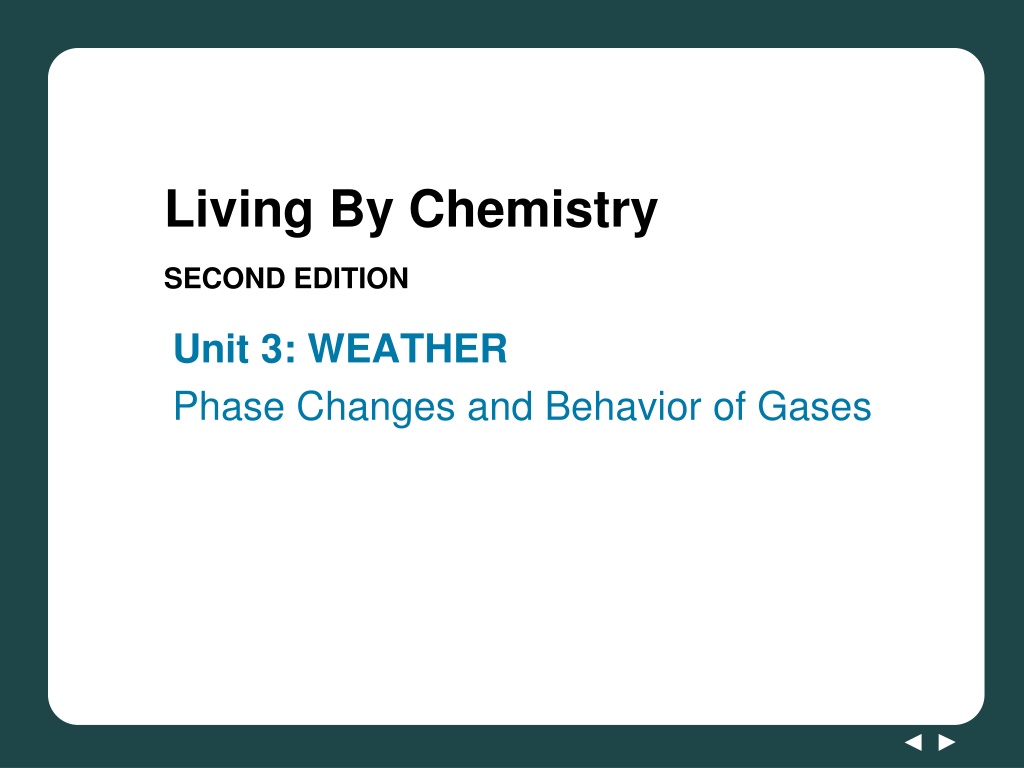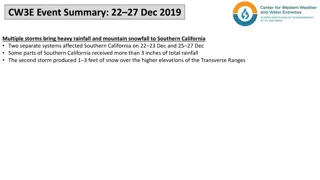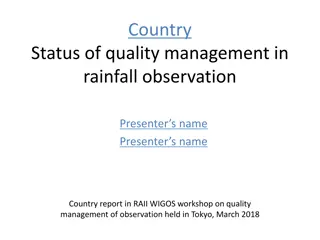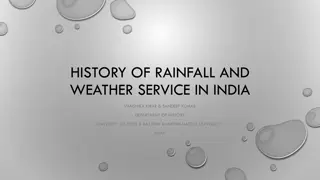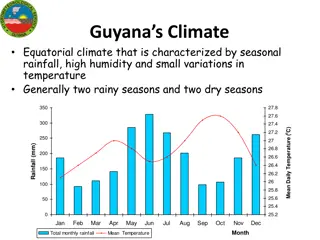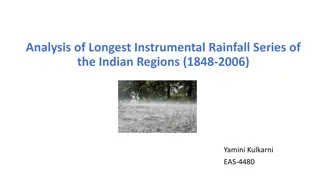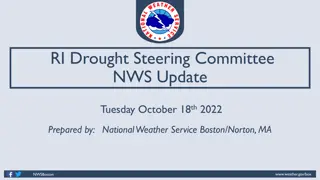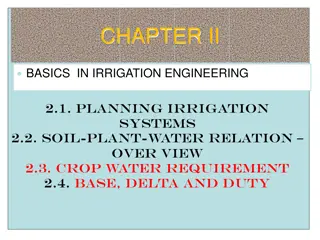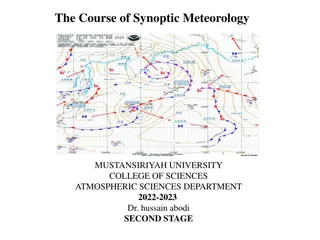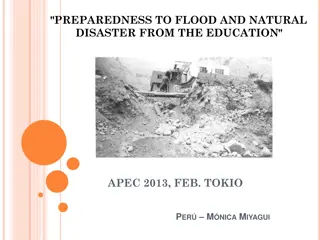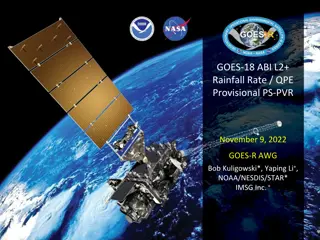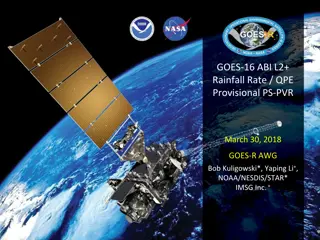Understanding Rainfall Measurement in Meteorology
Explore the methods for measuring rainfall, the importance of using rain gauges over volume measurements, and the concept of proportional relationships in this informative lesson on weather phenomena. Discover why meteorologists track rainfall in terms of height and how to conduct experiments to measure rainfall accurately.
Download Presentation

Please find below an Image/Link to download the presentation.
The content on the website is provided AS IS for your information and personal use only. It may not be sold, licensed, or shared on other websites without obtaining consent from the author. Download presentation by click this link. If you encounter any issues during the download, it is possible that the publisher has removed the file from their server.
E N D
Presentation Transcript
Living By Chemistry SECOND EDITION Unit 3: WEATHER Phase Changes and Behavior of Gases
Lesson 50: Raindrops Keep Falling Measuring Liquids
ChemCatalyst 1. How is rainfall usually measured? Describe the type of instrument you think is usually used. Which of these containers would make the best rain gauge? Explain your reasoning. 2.
Key Question How do meteorologists keep track of the amount of rainfall?
You will be able to: identify a proportional relationship describe several methods for solving a problem involving proportional variables explain why rainfall is measured in terms of height rather than volume
Prepare for the Lab Work in pairs.
Prepare for the Lab (cont.) Does the same amount of rain fall on each area? How could you measure the amount of rain that falls on the objects?
Discussion Notes The data points show that volume increases in a steady and predictable way in relation to the height of the beaker. Proportional: Two variables are directly proportional when you can multiply the value of one by a constant to obtain the value of the other.
Discussion Notes (cont.) The graphed line and the math associated with the line represent an ideal. The volume of rainfall increases regularly in relation to the height of the rainfall. The height of rain collected in a rain gauge does not depend on the diameter of the container. The volume of rain collected does depend on the diameter of the container.
Discussion Notes (cont.) If meteorologists reported rainfall in terms of volume, they would all need to use a rain gauge with the exact same size and shape in order to be able to compare measurements.
Discussion Notes (cont.) There are countless examples of proportional relationships in the world around you. For example: The number of steps in a staircase is proportional to the total height of the staircase. The number of pages in a book is proportional to the thickness of the book. The relationship between centimeters and inches is proportional.
Discussion Notes (cont.) All these proportional relationships can be expressed mathematically. In each case, one number in the equation does not change. Proportionality constant: The number that relates two variables that are proportional to each other. It is represented by a lowercase k.
Wrap Up How do meteorologists keep track of the amount of rainfall? Meteorologists measure the height of rain, because the volume of rain is directly proportional to the height of the water measured. Graphs of two variables that are proportional are always a straight line through the origin. When one variable is proportional to another, it is possible to make accurate predictions of other values when one data point is known.
Check-In Suppose you find that a cylindrical rain gauge contains a volume of 8 mL of rain for a height of 2 cm of rain. Describe how you might figure out the volume of rain for a height of 10 cm of rain in this same container.
